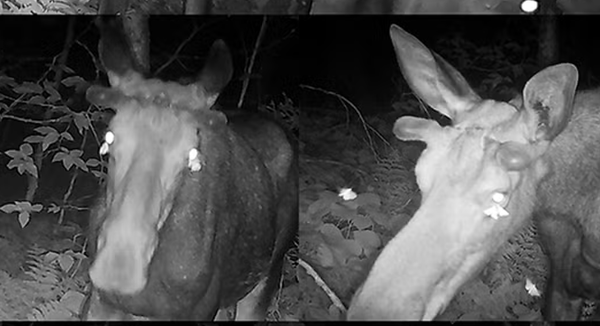A thumbprint on a cigarette pack solved a 48-year-old murder

From the New York Times: "Jeannette Ralston was at the Lion’s Den bar in San Jose, Calif., when she told her friends that she would be “back in 10 minutes.”She never returned. The next morning, on Feb. 1, 1977, police officers found the 24-year-old woman strangled with the long sleeve of a red women’s dress shirt and squeezed into the back seat of her Volkswagen Beetle in a parking lot a few minutes away from the bar. Almost 50 years later, the authorities believe that they know who strangled her. Willie Eugene Sims, 69, of Jefferson, Ohio, was arraigned on Friday on a charge of murder in San Jose. The investigation into the killing of Ms. Ralston, a mother and resident of San Mateo, Calif., went cold after no credible leads were initially developed. The police found a carton of Eve cigarettes, a popular brand for women in the 1970s, and the shirt that she was strangled with. They also had a sketch drawn of an unidentified man that her friends saw her leave the bar with the night before she was found."
This robot is made from natural materials and biodegrades when you are finished with it

From Scientific American: "Picture a robot. What do you see? A rugged, steel-clad machine built to transcend living beings’ organic fragility? Unfortunately, this very quality now threatens to drown the planet in extremely durable e-waste. What if, instead, our increasingly prevalent machines were designed to decay and disappear — like life does? For a study in Science Advances, researchers crafted a robotic arm, and a joysticklike controller to operate it, from pork gelatin and plant cellulose — materials sturdy enough to function yet delicate enough to degrade in backyard compost. They started with cellulose layers derived from cotton pulp, then added glycerol for flexibility and dried the layers for strength. To build sensors, the researchers used a conductive gelatin extracted from pork, in which the flow of ions changes when the material is stretched, bent or pressed. They then folded the flat films and sensors into 3D structures."
The sound from a rockslide-generated tsunami in a Greenland fjord echoed for 9 days

From Everything Is Amazing: "In September 2023, geophysicists across the world started picking up a very odd signal coming from the ground under their feet. It could be detected everywhere - and it wasn’t hard to spot against the normal discontinuous background noise of our planet bending, cracking, heaving and erupting in fabulously complicated ways, because this was a single vibration frequency, as regular as a metronome. For over a week, the Earth chimed like a struck bell. One pulse every 90 seconds, every hour of every day, for 9 days. On the 16th of September 2023, part of a glacier had collapsed, plunging 25 million cubic meters of rock and ice into the waters of the fjord. The resulting cataclysmic backsplash of water - a megatsunami - was around 200 metres tall (nearly as tall as the Golden Gate Bridge is long), and triggered a wave around 100 metres high racing across the fjord to smash against the other side of it."
Hi everyone! Mathew Ingram here. I am able to continue writing this newsletter in part because of your financial help and support, which you can do either through my Patreon or by upgrading your subscription to a monthly contribution. I enjoy gathering all of these links and sharing them with you, but it does take time, and your support makes it possible for me to do that. I also write a weekly newsletter of technology analysis called The Torment Nexus.
Why did some ancient cultures develop rules about not eating pork? It's complicated

From Archaeology: "Pork accounts for more than a third of the world’s meat, making pigs among the planet’s most widely consumed animals. They are also widely reviled: For about two billion people, eating pork is explicitly prohibited. The Hebrew Bible and the Islamic Koran both forbid adherents from eating pig flesh, and this ban is one of humanity’s most deeply entrenched dietary restrictions. For centuries, scholars have struggled to find a satisfying explanation for this widespread taboo. Among the most surprising finds is that the inhabitants of the earliest cities of the Bronze Age (3500–1200 b.c.) were enthusiastic pig eaters, and that even later Iron Age (1200–586 b.c.) residents of Jerusalem enjoyed the occasional pork feast. Yet despite a wealth of data and new techniques including ancient DNA analysis, archaeologists still wrestle with many porcine mysteries, including why the once plentiful animal gradually became scarce long before religious taboos were enacted."
She was a nurse who gave pot to AIDS patients and changed the laws around medical marijuana

From Wikipedia: "Mary Jane Rathbun, popularly known as Brownie Mary, was an American medical cannabis rights activist. As a hospital volunteer at San Francisco General Hospital, she became known for baking and distributing cannabis brownies to AIDS patients. Rathbun lobbied for the legalization of cannabis for medical use, and she helped pass San Francisco Proposition P (1991) and California Proposition 215 (1996) to achieve those goals. She also contributed to the establishment of the San Francisco Cannabis Buyers Club, the first medical cannabis dispensary in the United States. Rathbun was arrested on three occasions, with each arrest bringing increased local, national, and international media attention to the medical cannabis movement. Her grandmotherly appearance generated public sympathy for her cause and undermined attempts by the district attorney's office to prosecute her for possession."
Either the NYPD has an ice-cream surveillance truck or an off-duty cop runs an ice-cream van
NYPD appears to have an ice cream surveillance truck pic.twitter.com/i6CGbKCWCc
— naomi (@lachancenaomi27) May 11, 2025
Acknowledgements: I find a lot of these links myself, but I also get some from other newsletters that I rely on as "serendipity engines," such as The Morning News from Rosecrans Baldwin and Andrew Womack, Jodi Ettenberg's Curious About Everything, Dan Lewis's Now I Know, Robert Cottrell and Caroline Crampton's The Browser, Clive Thompson's Linkfest, Noah Brier and Colin Nagy's Why Is This Interesting, Maria Popova's The Marginalian, Sheehan Quirke AKA The Cultural Tutor, the Smithsonian magazine, and JSTOR Daily. If you come across something interesting that you think should be included here, please feel free to email me at mathew @ mathewingram dot com



